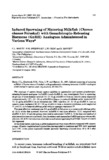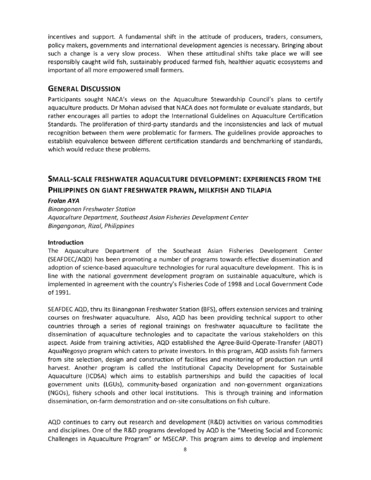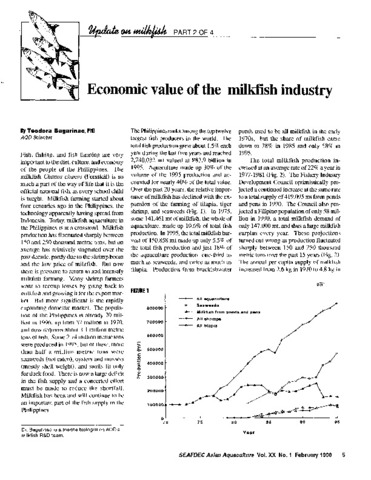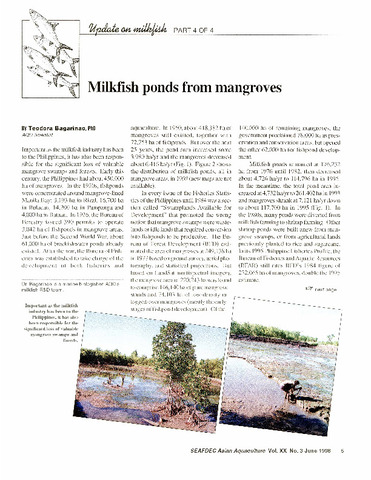Induced spawning of maturing milkfish (Chanos chanos Forsskal) with gonadotropin-releasing hormone (GnRH) analogues administered in various ways

Tingnan/
Petsa
1987Page views
582Metadata
Ipakita ang buong tala ng itemCited times in Scopus
Share
Abstract
The response of mature female captive milkfish to mammalian and salmon gonadotropin-releasing hormone analogues (mGnRH-A and sGnRH-A) was investigated. Prior to spawning, six groups of three females received (1) 10–16 μg mGnRH-A from an osmotic pump implanted intraperitoneally (IP); (2) 100 μg mGnRH-A from a cholesterol/cellulose pellet implanted IP; (3) 10 μg/kg mGnRH-A as an intramuscular (IM) injection; (4) 10–16 μg sGnRH-A from an osmotic pump implanted IP; (5) 100 μg sGnRH-A from a cholesterol/cellulose pellet implanted IP, and (6) a cholesterol/cellulose pellet without analogue implanted IP.
The most effective treatment was 100 μg sGnRH-A/fish given in a cholesterol/cellulose pellet; all (3/3) of the fish spawned. However, mGnRH-A was more effective (2/3) compared with sGnRH-A (1/3) if osmotic pumps were used to administer GnRH-A. If the dose and method of administration were not considered, then the salmon and mammalian GnRH analogues were equally effective (62–67%) for induction of ovulation and natural spawning in milkfish. Gonads of control fish regressed.
At the doses tested, injections or pellet implantations were more effective compared with osmotic pumps. All pellet-implanted and injected females responded to treatment and 75% (6/8) spawned; half (3/6) of the pump-implanted females spawned. Spawning occurred from 18 to 36 h after treatment.
Paglalarawan
Contribution No. 185 of the SEAFDEC Aquaculture Department.
Suggested Citation
Marte, C. L., Sherwood, N. M., Crim, L. W., & Harvey, B. (1987). Induced spawning of maturing milkfish (Chanos chanos Forsskal) with gonadotropin-releasing hormone (GnRH) analogues administered in various ways. Aquaculture , 60(3-4), 303-310. https://doi.org/10.1016/0044-8486(87)90295-X
Taxonomic term
Mga koleksyon
- AQD Journal Articles [1249]
Related items
Showing items related by title, author, creator and subject.
-
Small-scale freshwater aquaculture development: Experiences from the Philippines on giant freshwater prawn, milkfish and tilapia
Aya, Frolan (Japan International Cooperation Agency, 2013-12)The Aquaculture Department of the Southeast Asian Fisheries Development Center (SEAFDEC/AQD) has been promoting a number of programs towards effective dissemination and adoption of science-based aquaculture technologies ... -
Economic value of the milkfish industry
Bagarinao, Teodora (Aquaculture Department, Southeast Asian Fisheries Development Center, 1998)A brief description is given of the milkfish (Chanos chanos) farming industry in the Philippines. Over the past 20 years, the relative importance of milkfish has declined with the expansion of tilapia, tiger shrimp and ... -
Milkfish ponds from mangroves
Bagarinao, Teodora (Aquaculture Department, Southeast Asian Fisheries Development Center, 1998)



